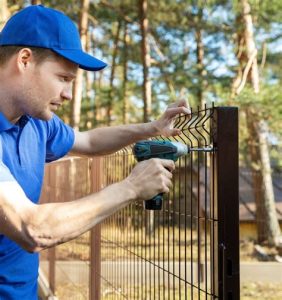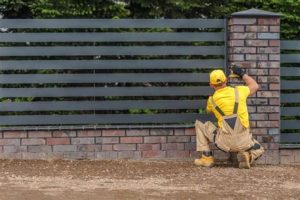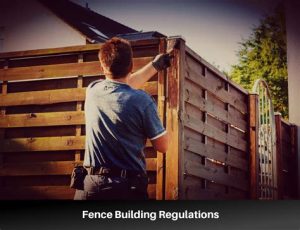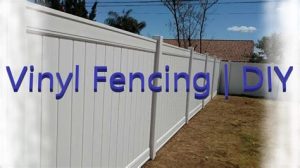Learn essential tips on selecting materials, installing properly, maintaining regularly, managing weather damage, and upgrading appearance for superior long-lasting results.Installing a fence can be a rewarding DIY project that enhances the beauty and security of your home. However, to ensure its longevity and effectiveness, proper maintenance is key. In this blog post, we will share essential tips for maintaining a DIY-installed fence, from selecting the right materials that withstand the test of time to employing proper installation techniques that lay a solid foundation. We’ll also cover the importance of regular inspections and maintenance, the steps to take when facing weather damage, and creative ways to upgrade and enhance your fence’s appearance over time. Whether you’re a seasoned DIY enthusiast or a newcomer, these tips will help you keep your fence looking great and functioning well for years to come. Let’s dive in!
Choosing the Right Materials
When it comes to installing a fence, one of the most crucial steps is choosing the right materials. The material you select will directly affect the durability, maintenance, and overall appearance of your fence.
| Material | Pros | Cons |
|---|---|---|
| Wood | Natural look, versatile styles, customizable | Requires regular maintenance, susceptible to rot |
| Vinyl | Low maintenance, resistant to weather and pests | Higher initial cost, less customizable |
| Metal (Chain Link or Wrought Iron) | Durable, provides security | Less privacy, can rust if not treated |
| Composite | Resistant to fading and rotting, low maintenance | Can be expensive, limited styles |
Each material comes with its own set of advantages and disadvantages, so it’s essential to consider your specific needs when making a decision. Factors such as local weather conditions, the purpose of the fence, and your budget should heavily influence your choice of materials.
Additionally, always verify that the materials you choose are suited for your area’s climate and soil type.
Proper Installation Techniques
When it comes to maintaining a DIY installed fence, proper installation techniques are crucial for ensuring its longevity and strength. Following the right steps during the installation process can greatly reduce the need for repairs in the future.
- Plan Your Layout: Begin by marking the fence line using stakes and string. This helps visualize the fence’s placement and ensures it follows the property lines.
- Choose the Right Depth for Post Holes: Ideally, post holes should be at least one-third the height of the fence above ground. A deeper hole provides stability, particularly in windy conditions.
- Use Quality Materials: Selecting durable materials, like treated wood or high-quality vinyl, can withstand various weather conditions, thus decreasing potential damage in the long run.
Additionally, pay special attention to the spacing between your posts. Generally, spacing them about 6 to 8 feet apart ensures a sturdy and attractive fence. Make sure to utilize a level during installation to keep everything straight and aligned.
Lastly, properly securing your posts with concrete or gravel will prevent them from shifting or leaning over time. Remember, taking the time to achieve a solid installation is a key factor in the overall health of your fence!
Regular Inspection and Maintenance
One of the most crucial aspects of ensuring the longevity of your DIY fence is regular inspection and maintenance. By routinely checking the condition of your fence, you can identify potential issues before they become larger problems. This proactive approach can save you time and money in the long run.
- Wood Condition: Check for rot, pest infestations, or any signs of deterioration.
- Hardware Integrity: Inspect hinges, latches, and any other hardware for rust or wear.
- Stability: Ensure that the fence posts are sturdy and that there are no leanings or structural weaknesses.
- Paint and Sealant: If your fence is painted or sealed, look for peeling or fading and consider a touch-up.
In addition to inspections, regular maintenance is essential.
- Cleaning your fence to remove dirt, grime, and mildew.
- Applying a protective sealant or stain every few years to extend the life of wooden fences.
- Tightening loose boards or hardware promptly to maintain stability and appearance.
Dealing with Weather Damage
Weather can be unpredictable, and when it comes to maintaining a DIY installed fence, dealing with weather damage is a crucial aspect to consider. Natural elements such as rain, wind, snow, and extreme temperatures can significantly impact the integrity and appearance of your fence. Therefore, it’s essential to be proactive in addressing weather issues to extend the lifespan of your fencing.
One of the primary steps to mitigate weather damage is to regularly inspect your fence, especially after severe weather events. Look for signs of warping, rotting, or rusting, depending on the materials used. For wooden fences, ensure that they are treated with a good quality water-resistant sealant to protect against moisture. For metal fences, consider applying a protective coating to prevent rust.
Additionally, maintaining proper drainage around your fence is vital. Ensure that water is directed away from the base of the fence posts to avoid erosion and rotting. If your area experiences heavy snowfall, make it a habit to clear the snow away from the fence, as heavy snow can strain the structure. Your proactive maintenance will help your fence withstand the toughest weather conditions.
Upgrading and Enhancing Appearance
One of the best ways to elevate your fence’s aesthetic is by choosing the right finishing touches. Consider adding a fresh coat of paint or stain to give your fence a new lease on life. Opt for colors that harmonize with your home’s exterior to create a cohesive look.
Another practical enhancement involves incorporating landscaping elements around your fence. Planting flowers, shrubs, or even a climbing vine can soften the edges of your fence and provide a natural backdrop that enhances its beauty. By adding greenery, you can create a more inviting atmosphere.
For those who want to take it a step further, think about installing decorative features such as lighting or sconces to highlight your fence at night. String lights or lanterns can create an enchanting atmosphere, making your outdoor space feel welcoming after dark. Furthermore, decorative panels or post caps can add an eye-catching element to your fence design, making it stand out in your neighborhood.
Frequently Asked Questions
What are the essential tools needed for maintaining a DIY installed fence?
Essential tools include a hammer, nails, a saw, a level, a measuring tape, a drill, and safety gear like gloves and goggles.
How often should I check my fence for damage?
It’s advisable to inspect your fence at least twice a year, preferably in spring and fall, to address any wear and tear.
What common issues should I look for during my fence inspection?
Look for signs of rot, rust, loose boards, leaning sections, and any insect infestations or damages caused by weather.
How can I protect my wooden fence from the elements?
To protect a wooden fence, consider applying a weatherproof sealant, painting it with a durable outdoor paint, or using a wood preservative.
What is the best way to clean my fence?
You can clean your fence using a mixture of water and mild soap, applied with a brush or sponge. For tougher stains, a pressure washer may be used, but avoid damaging the wood.
Should I replace or repair a damaged fence panel?
It depends on the extent of the damage. If the panel is structurally sound and can be repaired, do so; otherwise, replacing it may be more cost-effective.
Are there specific maintenance tips for metal fences?
For metal fences, regularly check for rust, clean with a wire brush, and apply a rust-inhibiting paint or sealant to maintain its lifespan.




